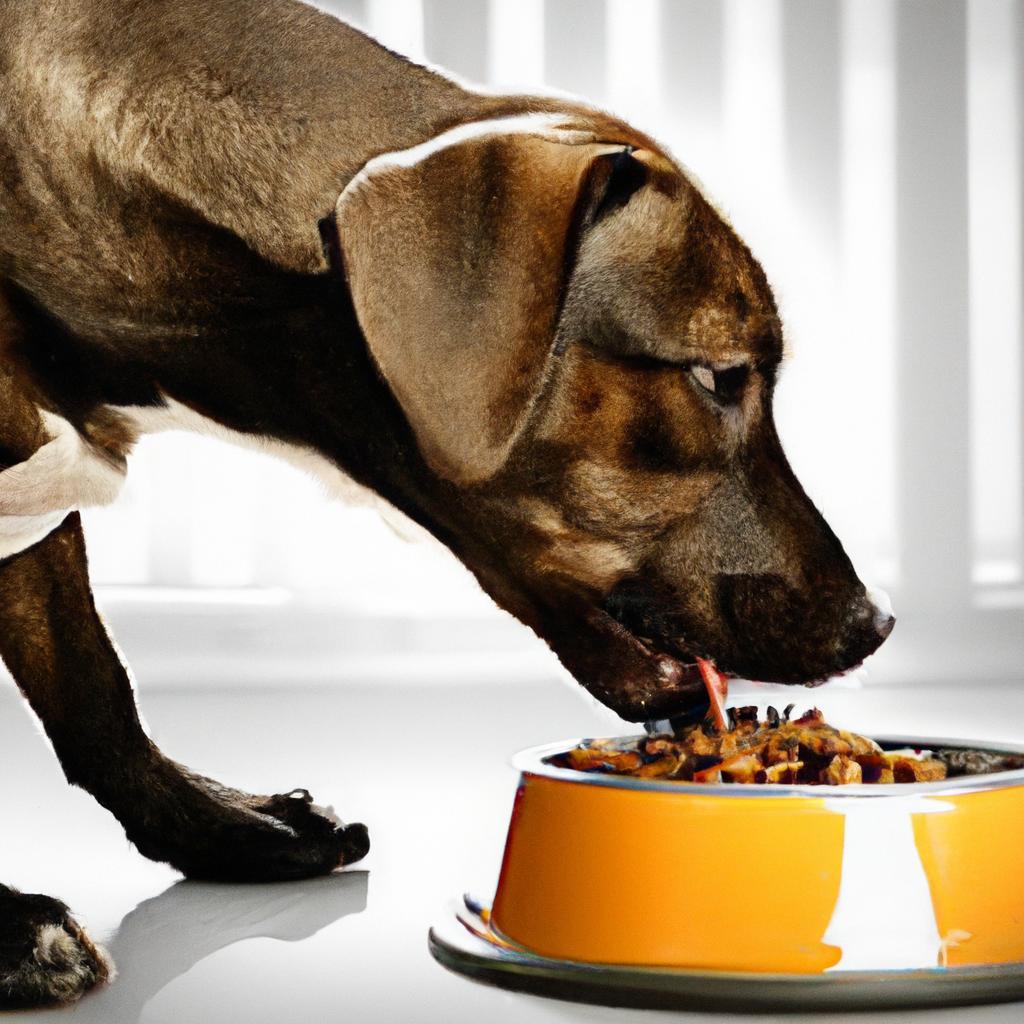When Sarah adopted Max, her energetic golden retriever, she was determined to give him the best. One day, while shopping for dog food, she noticed a shiny bag with a picture of a happy dog. But Sarah remembered her vet’s advice: “Read the ingredients!” She learned to look for real meat as the first ingredient, avoid fillers like corn and soy, and check for AAFCO approval. By choosing high-quality food, Sarah not only nourished Max but also ensured he thrived. Quality matters—your dog deserves the best!
Contents
- Understanding Ingredient Quality and Sourcing for Optimal Nutrition
- Evaluating Nutritional Balance and AAFCO Standards for Your Dogs Health
- Recognizing the Importance of Transparency and Brand Reputation
- Assessing Packaging and Storage Practices for Freshness and Safety
- Q&A
Understanding Ingredient Quality and Sourcing for Optimal Nutrition
When evaluating the quality of dog food, one of the most critical factors to consider is the sourcing of its ingredients. High-quality dog food brands prioritize transparency in their ingredient lists, often sourcing their components from reputable suppliers. Look for brands that specify the origin of their ingredients, as this can indicate a commitment to quality and safety. Ingredients sourced from local farms or trusted suppliers are often fresher and more nutritious, contributing to your dog’s overall health.
Another essential aspect of ingredient quality is the type of protein used. Dogs thrive on animal-based proteins, which provide essential amino acids necessary for their growth and maintenance. **High-quality dog foods** typically list a specific meat source, such as chicken, beef, or fish, as the first ingredient. Avoid products that use vague terms like “meat meal” or “animal by-products,” as these can indicate lower-quality sources that may lack nutritional value.
In addition to protein, the presence of whole grains, fruits, and vegetables can enhance the nutritional profile of dog food. These ingredients provide vital vitamins, minerals, and antioxidants that support your dog’s immune system and overall well-being. **Look for** dog foods that include whole ingredients such as brown rice, sweet potatoes, or blueberries, as these are more beneficial than processed fillers. A diverse ingredient list often signifies a more balanced diet, catering to your dog’s nutritional needs.
Lastly, consider the absence of harmful additives and fillers. High-quality dog foods steer clear of artificial preservatives, colors, and flavors, opting instead for natural alternatives. Ingredients like **probiotics** and **omega fatty acids** are often included to promote digestive health and a shiny coat. Always check for certifications or endorsements from veterinary nutritionists, as these can further validate the quality of the dog food you choose. By prioritizing ingredient quality and sourcing, you can ensure that your furry friend receives the optimal nutrition they deserve.
Evaluating Nutritional Balance and AAFCO Standards for Your Dogs Health
When selecting dog food, understanding the nutritional balance is crucial for your pet’s overall health. A high-quality dog food should provide a complete and balanced diet, ensuring that your furry friend receives all the essential nutrients they need to thrive. Look for foods that list high-quality protein sources as the first ingredient, such as chicken, beef, or fish, which are vital for muscle development and energy.
In addition to protein, a well-rounded dog food should include a variety of **whole grains**, **fruits**, and **vegetables**. These ingredients not only provide necessary carbohydrates for energy but also deliver important vitamins, minerals, and antioxidants that support your dog’s immune system. Ingredients like sweet potatoes, blueberries, and carrots can enhance the nutritional profile of the food, making it more beneficial for your pet.
Another critical aspect to consider is whether the dog food meets the standards set by the **Association of American Feed Control Officials (AAFCO)**. AAFCO establishes guidelines for pet food labeling and nutritional adequacy, ensuring that products are formulated to meet the specific dietary needs of dogs at various life stages. Look for labels that indicate the food has undergone feeding trials or meets AAFCO’s nutritional standards, as this is a strong indicator of quality.
Lastly, be wary of vague marketing claims. Terms like “natural,” “premium,” or “holistic” can be misleading without proper context. Instead, focus on the ingredient list and guaranteed analysis provided on the packaging. A reputable brand will be transparent about their ingredients and nutritional content, allowing you to make an informed decision about your dog’s diet. Prioritizing these factors will help you choose a high-quality dog food that supports your pet’s health and well-being.
Recognizing the Importance of Transparency and Brand Reputation
In the competitive world of pet food, transparency is a crucial factor that can significantly influence your purchasing decisions. A reputable brand will openly share information about their sourcing, manufacturing processes, and ingredient quality. Look for companies that provide detailed descriptions of their ingredients, including the origin and nutritional benefits. This level of openness not only builds trust but also ensures that you are making informed choices for your furry friend.
Another key aspect to consider is the brand’s commitment to quality assurance. High-quality dog food manufacturers often undergo rigorous testing and adhere to strict safety standards. Brands that are transparent about their testing protocols and certifications demonstrate a dedication to producing safe and nutritious products. When evaluating a dog food brand, check for third-party testing and certifications from recognized organizations, as these can serve as a testament to their quality.
Customer feedback and brand reputation play a significant role in assessing the quality of dog food. Take the time to read reviews and testimonials from other pet owners. A brand that consistently receives positive feedback regarding its products and customer service is likely to be a reliable choice. Additionally, consider how the brand responds to criticism or concerns. A company that actively engages with its customers and addresses issues promptly is more likely to prioritize the well-being of pets.
Lastly, consider the brand’s overall mission and values. Companies that prioritize sustainability, ethical sourcing, and animal welfare often reflect a commitment to quality that extends beyond just their products. Look for brands that align with your values and demonstrate a genuine concern for the health of pets and the environment. By choosing a brand that embodies transparency and a strong reputation, you can feel confident that you are providing your dog with the best possible nutrition.
Assessing Packaging and Storage Practices for Freshness and Safety
When evaluating the quality of dog food, one crucial aspect to consider is the packaging and storage practices employed by the manufacturer. High-quality dog food is often packaged in materials that protect the contents from light, moisture, and air, which can degrade the nutritional value over time. Look for packaging that is:
- Opaque or dark-colored: This helps prevent light exposure, which can lead to nutrient loss.
- Resealable: Resealable bags maintain freshness after opening, allowing you to store the food safely.
- Vacuum-sealed: This method minimizes air exposure, preserving the food’s quality and preventing spoilage.
Storage practices are equally important in maintaining the freshness and safety of dog food. Quality brands often provide clear instructions on how to store their products to ensure optimal longevity. Proper storage can significantly impact the food’s shelf life and nutritional integrity. Consider the following recommendations:
- Cool, dry place: Store dog food in a location that is not exposed to heat or humidity, as these conditions can promote spoilage.
- Airtight containers: Transferring food to airtight containers can further protect it from moisture and pests.
- Check expiration dates: Always be mindful of the expiration date on the packaging to ensure you are feeding your dog fresh food.
Additionally, reputable manufacturers often conduct rigorous testing to ensure their packaging and storage methods meet high safety standards. They may also include information about their quality control processes on their websites or product labels. This transparency is a strong indicator of a brand’s commitment to providing safe and nutritious food for your pet. Look for brands that:
- Share sourcing information: Knowing where ingredients come from can give you confidence in their quality.
- Provide feeding guidelines: Clear instructions on how to serve and store the food demonstrate a brand’s dedication to pet health.
- Engage in third-party testing: Independent testing can validate the quality and safety of the food.
assessing the packaging and storage practices of dog food is essential in determining its quality. By choosing products that prioritize protective packaging and provide clear storage guidelines, you can ensure that your dog receives the freshest and safest food possible. Investing time in understanding these factors will not only enhance your pet’s health but also contribute to their overall happiness and well-being.
Q&A
-
What ingredients should I look for in high-quality dog food?
High-quality dog food should list real meat as the first ingredient, such as chicken, beef, or fish. Look for whole food ingredients like fruits and vegetables, and avoid foods with fillers like corn, soy, or artificial additives.
-
How can I identify the nutritional value of dog food?
Check the guaranteed analysis on the packaging, which provides information on protein, fat, fiber, and moisture content. A high-quality dog food should have a balanced nutritional profile that meets the AAFCO (Association of American Feed Control Officials) standards.
-
Are there any certifications or labels that indicate quality?
Look for dog foods that have undergone feeding trials or have certifications from reputable organizations. Labels such as “complete and balanced” or “meets AAFCO standards” are indicators of quality and safety.
-
What role do brand reputation and transparency play?
A reputable brand will provide clear information about sourcing, manufacturing processes, and ingredient quality. Research the brand’s history, customer reviews, and any recalls to ensure you are choosing a trustworthy product.
choosing high-quality dog food is essential for your pet’s health and happiness. By prioritizing ingredients, sourcing, and nutritional balance, you can ensure your furry friend thrives. Invest in their well-being today for a brighter tomorrow!

大家好,我是彼得潘,專業的手法身體治療師。我喜歡探索和研究各種主題,並透過與人工智慧的合作分享專業、實用、有趣的文章。我們定期進行人工審核,以確保內容的準確性。如果您發現文章中有任何不準確的地方,請隨時與我們聯繫,我們會及時糾正。您可以透過 [email protected] 與我們聯繫。



